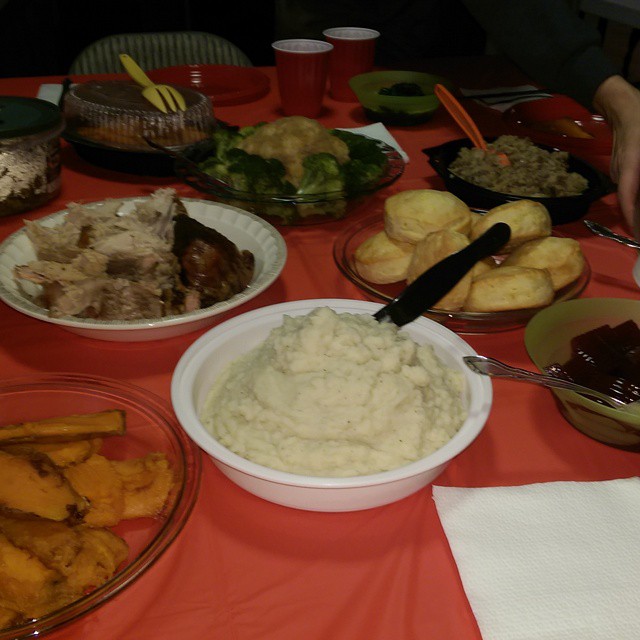Disclosure: In any review for a product or service, products or compensation may have been provided to me to help facilitate my review. All opinions are my own and honest. I am disclosing this in accordance with FTC Guidelines. Please see “Disclose” and "Terms of Use" tabs for more information.
So, it’s all over. All that prep, the cooking, the shopping- and of course, the eating. Now- what to do with all those leftovers?
If your family is anything like mine, then you’re used to having the same problem each Thanksgiving—what to do with all the leftover food! While you may be dreaming of turkey sandwiches and leftover pie, just remember that mishandling leftovers can create opportunities for contamination with bacteria. So keep these food safety tips in mind after the big party to prevent foodborne illness.
How Many of These Leftover Rules Do You Follow?
- Leftovers should be refrigerated or frozen in shallow containers. Whole roasts, hams and turkeys should be sliced or cut into smaller pieces or portions before storing them in the refrigerator or freezer. This encourages rapid, even cooling.
- In general, leftovers stored in the refrigerator should be consumed within 3-4 days. When possible, put a sticky note or other label on your leftovers with the date they were first stored so that you know when to toss them out. A full list of recommended cooling and freezing times is here: http://go.usa.gov/GKVd
- Throw away all perishable foods, such as meat, poultry, eggs and casseroles, left out at room temperature for more than two hours. This also includes leftovers you bring home from a Thanksgiving meal at a family or friend’s house. Some exceptions to this rule are foods such as cookies, crackers, bread and whole fruits.
- Turkeys are smoked for flavor, not so you can keep them around until New Years. Store a commercially smoked turkey in the refrigerator, unopened, no longer than a week. Once the package is opened, use or freeze the bird within 3 to 4 days.
- Reheat solid leftovers to at least 165 °F, as measured by a food thermometer. Reheat liquid leftovers to a rolling boil. Do not taste leftovers to check and see if they’ve spoiled – bacteria that cause illness do not affect the taste, smell, or appearance of food.
Food poisoning is a serious public health threat to our country. CDC estimates that approximately 1 in 6 Americans (or 48 million people) will suffer from food poisoning this year, resulting in roughly 128,000 hospitalizations and 3,000 deaths.
For more safe food handling info and leftover tips, visit FoodSafety.gov. You can also access “Ask Karen,” an online database with 1,500 answers in both English and Spanish to specific questions related to preventing foodborne illnesses. Or, you can also call the USDA Food Safety Hotline at 1-800-535-4555 available from 10am to 4pm Eastern Time, Monday through Friday.

















Speak Your Mind
You must be logged in to post a comment.